Take a drive about seventy miles north of the Black Hills and you’ll reach a site where a decisive battle took place during the Great Sioux War of 1876 which followed the stunning defeat of Colonel George Armstrong Custer in June of that year. The battle that took place at this site in September of 1876 was the first cavalry victory over the Sioux since Custer’s defeat.
Thank you for reading this post, don't forget to subscribe!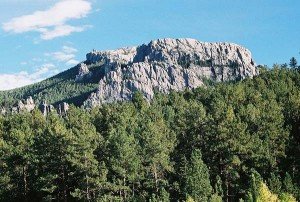
The actual battlefield in northwest South Dakota is now on private property. The area is between the towns of Buffalo and Bison. Today the visitor to this site will find an historical marker and memorial along the roadway. The memorial site is on State Highway 20 about three miles west of Reva South Dakota in Harding County.
So much has been chronicled about the Battle of the Little Bighorn, including on this site, but the Battle of Slim Buttes was directly related to what happened to George Armstrong Custer and the Seventh Cavalry in June of 1876.
The story of the army’s response to Custer’s defeat is often overshadowed by the debate over what exactly happened and who, if anyone, was to blame at the Little Bighorn including some of the investigations that ensued. The steps the army took immediately after Custer’s defeat is an interesting story.
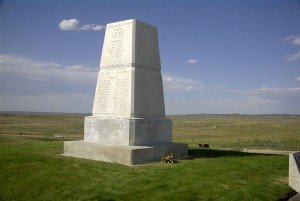
The U.S. Army troops in the area of Slim Buttes in 1876 were there because of the shocking defeat of Custer and his cavalry a few months earlier. They were there to end the Sioux War one way or the other. After the Little Bighorn battle the Sioux bands started to move eastward as a large group during July and August of 1876. General George Crook’s forces joined up with General Terry’s and started to move eastward as well.
After the Little Bighorn
The goal of course was to catch up with the hostiles and either to defeat them and/or drive them back to the Indian agencies. There was also concern that more Sioux didn’t leave the reservation and join their brothers. As a result, the army took over control of the reservations from the Indian Department. Any renegade Indians who did happen to show up at the agencies were immediately disarmed and had their ponies taken away.
What took place prior to the Battle of Slim Buttes could only be called the most rigorous and nearly impossible long march in U.S. Army history. What was to ensue over the following few weeks would try the most skilled soldier to the limits of human endurance. Both General Terry and General Crook reported directly to General Philip Sheridan who’s headquarters were in Chicago.
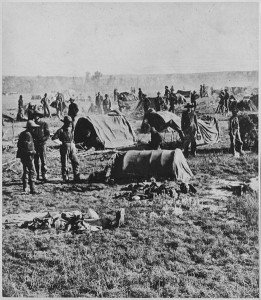
A March Like None Other
Instead of leading his troops toward a supply depot on either the Yellowstone River or further east at Fort Lincoln, Crook became concerned for the safety of Deadwood in the Black Hills. This was about 180 miles south of his current position. Crook’s concern was that Deadwood and other small mining camps around it would be attacked by the Sioux. As a result, he decided on a march to Deadwood while rations were almost exhausted.
Much of what took place during this arduous march would be chronicled by the journalists who were embedded in his command. Many rferred to this march as the “Horsemeat March of 1876“. The excellent book, Slim Buttes, 1876 by author Jerome A. Greene gives a detailed description of the long march, the slaughtering of cavalry horses necessary to feed the troops and the accidental Battle of Slim Buttes that took place during this journey toward Deadwood.
Captain Anson Mills
When the command was a few days ride out of Deadwood, Crook made the decision to send a detachment up ahead to Deadwood to both notify the town of their position and at the same time buy and bring supplies back to the camp where Crook decided to hold the troops for a while.The detachment sent to the Black Hills was commanded by Captain Anson Mills. Along with Mills was 150 select cavalrymen.
Crook ordered that the detachment avoid conflict with the hostiles during their journey. The detachment was sent for supplies to aid the larger group and were not sent out as scouts. While Mill’s detachment of 150 troops made their way toward the Black Hills one of their non Soldier scouts spotted Indians with game piled on their horses. When Mills heard of this he surmised correctly that there was certain to be an Indian village somewhere in the vicinity.
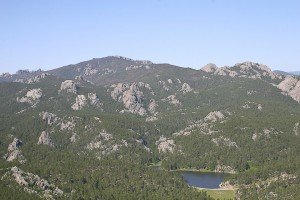
Battle of Slim Buttes
At this point Captain Mills made the decision to locate the village. When they neared the area they dismounted. They wished to get closer and ascertain the size of the camp and didn’t want noise from their mounts to give them away.
When the village was located on the banks of the Moreau River which today is named Gap Creek, Mills and several others including their scouts approached on foot. They saw the village but could not figure out it’s size. One thing the troops in Crook’s command knew was that Custer’s attack on the Little Bighorn without first knowing the size of the enemy camp was a contributing factor to his defeat.
Everyone in Mill’s detachment knew that this was a critical element and especially since their numbers were only 150. As for the Indians, they had no idea about Mills’ detachment. They were well aware that Crook was in the general area but not that one of his detachments was anywhere nearby.
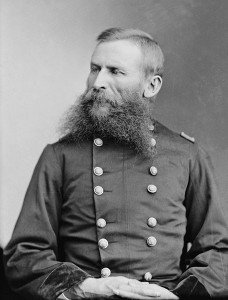
After discussing the situation with his officers, Captain Anson Mills decided that a daybreak attack would take place the next morning. The army had embraced surprise dawn attacks as the preferred method. This went all the way back to the Civil War days. In this instance, Mills would attack with three columns. The right and left would be on foot. The center column would be mounted and would tear through the village, stampeding the Indian ponies and shooting at whatever they could. Mills had hoped that the attack would be over in one clean sweep. The Indians would be killed or captured and any provisions they could find would be sent to Crook’s starved soldiers.
The Attack
What transpired was a bit different. The problem was that many warriors were able to flee south and west of the village and fired at the troops from the rocks and buttes above their former camp. The swift victory that Captain Mills anticipated didn’t materialize. What occurred was a sort of standoff where Indians in the rocks took shots at troops rummaging through the lodges in the village below. There was also concern that some of the warriors who fled would bring in reinforcements from Indian camps that were nearby. If that occurred, Mills attack against an undetermined size Indian village could have the same end results as Custer’s attack. The challenge Mills had was to hold out until Crook’s reinforcements could arrive.
Crook to the Rescue
Captain Mills sent a courier back to General Crook’s encampment further north. Fortunately Crook did not stay encamped as long as anticipated and was moving forward when the courier reached him announcing the Indian fight Mills’ troops were involved in.
Crook and his troops set out in the direction of the village to reinforce Mills. Crook’s command reached the Indian village, joined the fight and after a full day and the loss of several men took the village as well as some captives, mostly women and children who were hiding in the rocks above.
Below are links to additional trips Into History articles you may enjoy…
Garryowen and Custer’s Seventh Cavalry
A Visit to Fort Apache Historic Park
The Start of the Western Indian Wars / The Grattan Massacre
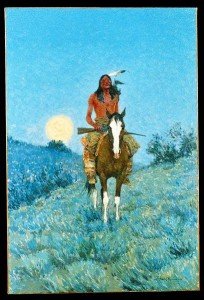
The Aftermath
The Battle of Slim Buttes took place on September 9 and 10, 1876, about 2 1/2 months after Custer’s defeat. Interestingly, while rummaging through and destroying the Indian lodges, Crook’s troops discovered several items taken from Custer’s command. Cavalry shirts, a Seventh Cavalry guidon and several other personal military effects were found.
The estimates of those killed in this battle were two cavalrymen and one civilian scout. After the battle ended and the dead were buried, Crook headed for Deadwood Dakota Territory where he would be welcomed along the way with supplies brought out by the citizenry. A courier had been sent to notify the town of Crook’s nearby position. When the troops eventually made it to Deadwood they were greeted with a great ovation.
Three excellent books on this subject include General George Crook: His Autobiography…A Terrible Glory: Custer and the Little Bighorn by author James Donovan and The Slim Buttes Battle by author Fred H. Werner.
(Article copyright 2013 Trips Into History. Photos and images in the public domain)
